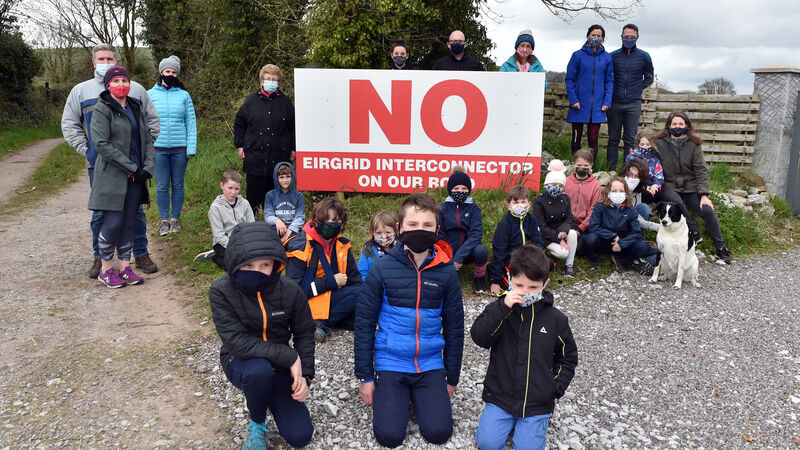Cork residents prepared for legal battle over €1bn electricity project

Churchtown North and Roxborough residents at a protest against the EirGrid Interconnector in the area. Picture: Eddie O'Hare
Residents' associations along the proposed route of a high-voltage underground cable are prepared to go to the High Court “or further if necessary” to prevent its laying.
They are along a section of land which will be used by EirGrid to lay underground cables as part of its €1bn Celtic Interconnector project, which will supply Ireland with electricity from France.













